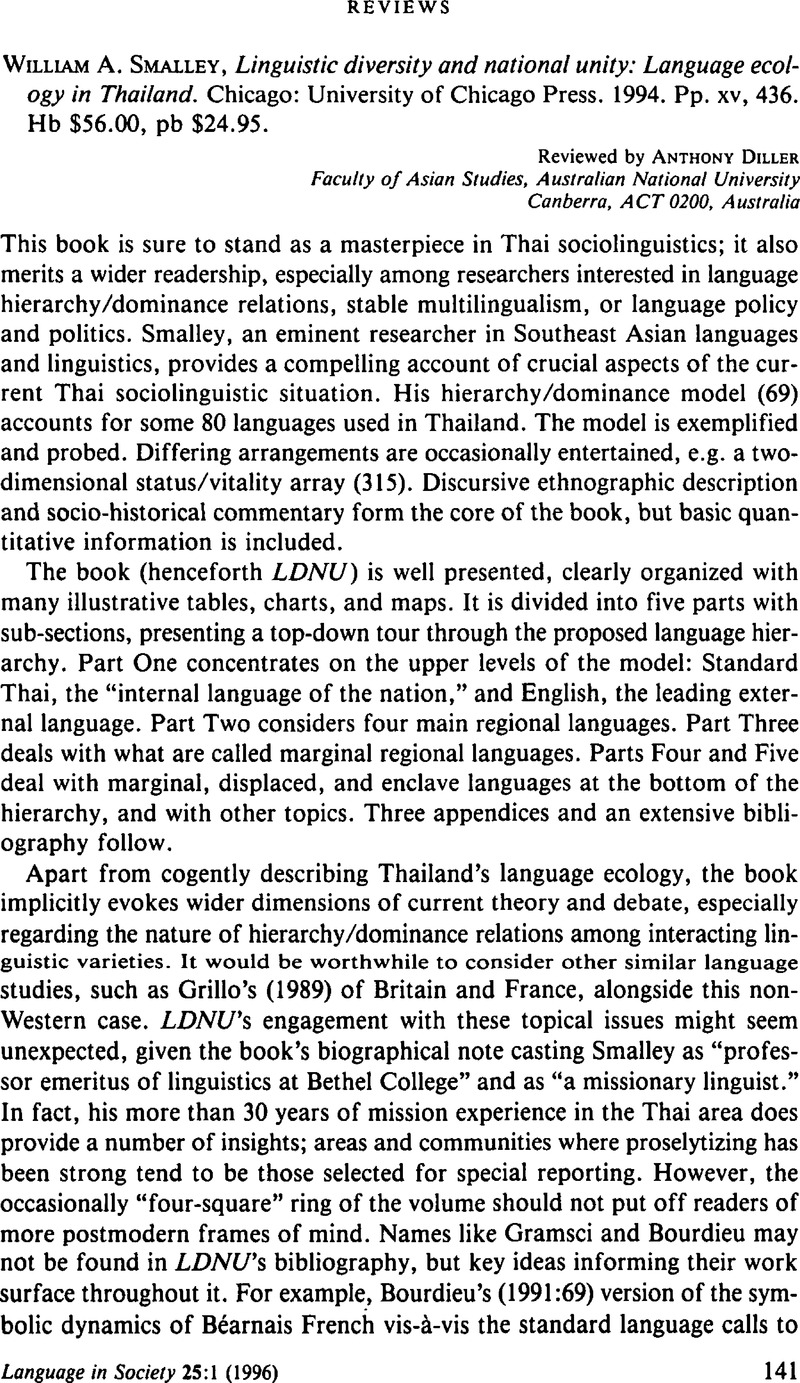Diller, Anthony (
1991). What makes Central Thai a national language? In
Reynolds, Craig J. (ed.),
National identity and its defenders: Thailand 1939–1989 (Monash papers on Southeast Asia, 25),
86–
132.
Melbourne:
Monash University Centre of Southeast Asian Studies. (Reprinted, 1993; Chiangmai, Thailand: Silkworm.)
Google Scholar 